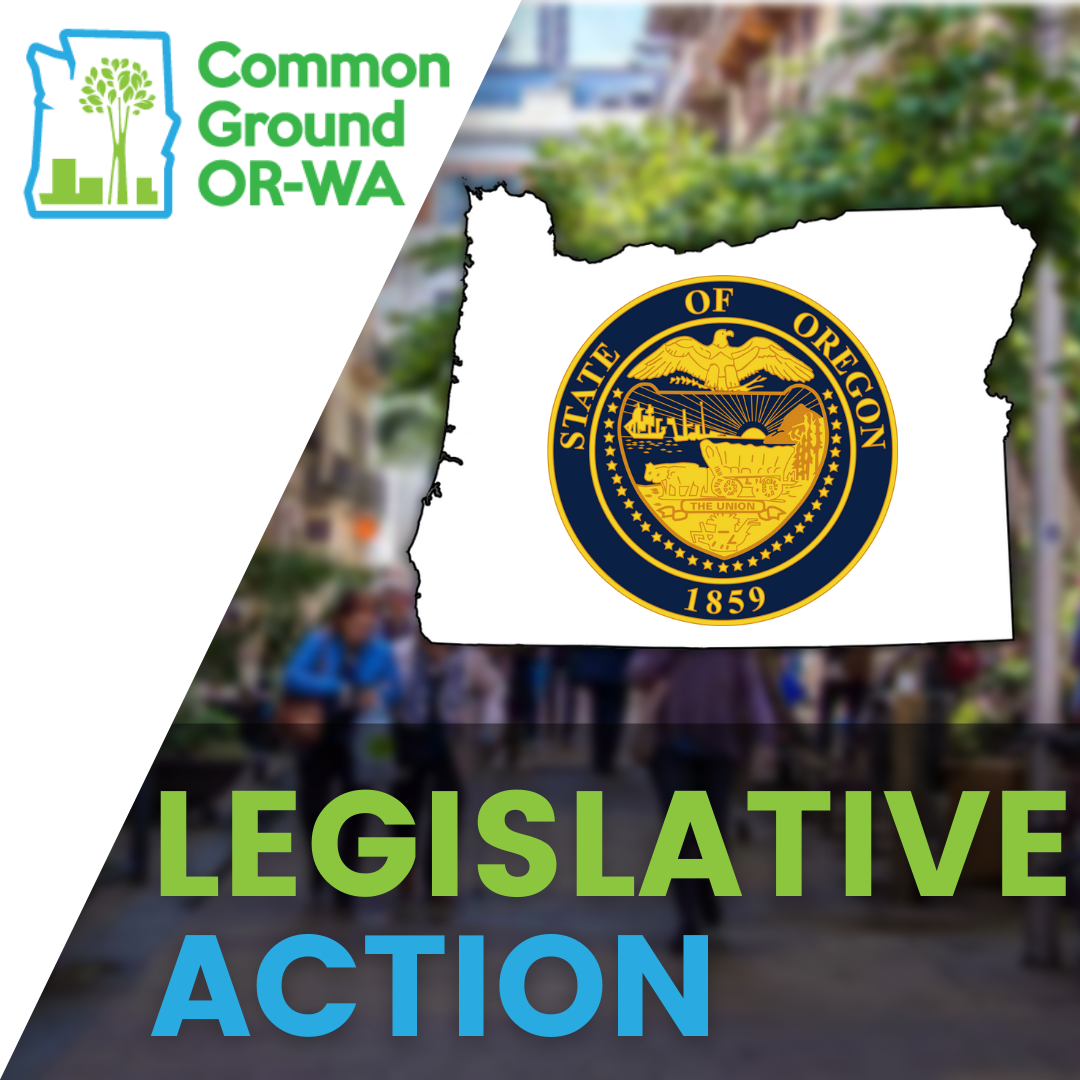OR-WA chapter of Common Ground-USA
Bills Proposed for the 2023 Oregon Legislative Session
Land Value Tax Study Bill
The Legislative Revenue Office shall conduct a study of land value taxation. The study must include:
An examination of the tax burden effects of a change from the current system of property taxation under Ballot Measure 5 (1990) and Ballot Measure 50 (1997) to a split-rate land value tax system utilizing real market assessments.
Using simulation models, analyze comparative tax levy outcomes on classes of land use and levels of land utilization.
An examination of comparative economic incentive effects on property in selected jurisdictions currently utilizing rural enterprise zone tax incentives.
An investigation into legal methods required to authorize a local option land value tax.
Possible tax burden relief measures accompanying land value taxation, including a homestead exemption and property tax deferral for homeowners who would be financially overburdened, and procedures helpful during the transition to a land value tax.
Housing Opportunity Fund
The bill establishes the Housing Opportunity Fund effective in 2024, providing that the fund may not make, purchase, guarantee, modify or hold loans until the fund has capital of at least $20 million. It specifies the purposes of the fund and establishes a board of directors. It allows the fund to accept deposits of public funds, to make, purchase, guarantee, modify or hold certain loans and to serve as a custodian bank. It directs the state treasurer to deposit money into the fund.
It is the intent of the Legislature that the fund shall partner with local financial institutions such as credit unions and local community banks. The fund shall not compete with local financial institutions.
The Housing Opportunity Fund is established in the State Treasury, separate and distinct from the General Fund. Interest earned by the Housing Opportunity Fund shall be credited to the fund.
Eligible programs will include local public infrastructure projects and affordable housing. Eligible clients will include governmental entities, local businesses, farmers, non-profit organizations, and lower income homeowners.
The fund will be a repository of revenues collected by state and local governments. The fund will partner with local community banks and credit unions to make loans. The fund will develop an initial cash flow from repayment of loans made to locally-owned businesses and homeowners. Once the loan portfolio produces sufficient revenue, the fund will lend directly to local governments, reducing the cost of public debt service.
Oregon Best Practice Assessment
Summary:
Directs the Oregon Department of Revenue(DOR) to write administrative rules requiring all Oregon county assessors to use mass appraisal and digital mapping systems to ensure a single property measurement standard; to ensure the adoption of an annual assessment cycle; to promote transparency and public trust in the valuation process; to oversee and ensure compliance by county assessors.
DOR shall have a dedicated funding source in place to provide the state’s county assessors the financial assistance necessary to comply with Oregon property tax laws and administrative rules required by DOR.
Provisions:
Property Appraisal
The DOR shall require all county assessment authorities to implement a mass appraisal system that yields current and separate real market land and improvement values for all taxable and tax exempt land parcels. Automated systems using computers and mathematical formulas shall be employed to establish an accurate relationship between assessed values and concurrent sales prices.
The DOR shall require standardized classifications for variable (data field or attribute) aggregations such as land use, location, valuation status, and shall also require standardized organization by census tract or zip code, survey grid section, and city, in order to enable a detailed analysis of how location affects the property tax incidence on residents. All taxable parcels shall also be identified by inclusion within an Oregon Enterprise Zone (ORS 285C), as well as its Current Use Value status. County assessors shall follow a standard method for consolidating land and improvement values of condominium units into total land and improvement value of a parcel’s building and shall follow a similar method for split tax lots.
DOR shall also require the use of computerized geographic information systems (GIS), permitting assessors to develop location-based property records or cadasters for special analysis, offering the potential for full integration with mass appraisal systems. On a GIS map, a parcel of land will be linked to one or more tax records which can identify the owner, valuation, use, or other attribute.
Assessment Cycle
DOR shall require each county assessor to annually update the real market assessment of all parcels in each municipality, based on a systematic review of current market (sales) data by sub-area, yielding accurate estimates of land values. The method of updating shall include annual factoring adjustments to keep land and improvement values current during periods between on-site appraisals.
Transparency
DOR shall establish a statewide GIS/parcel data warehouse that can be freely accessed by state agencies, cities and towns, businesses, schools, non-profits and by the general public. County assessors shall enter into data-sharing agreements for the purpose of providing complete data sets to municipalities, public institutions, and non-profit corporations, upon request, and shall make parcel level data available to the public through website access.
Resources
DOR shall have a dedicated funding source in place to provide the state’s county assessors the financial assistance necessary to comply with Oregon property tax laws and administrative rules required by DOR. This funding source is not intended to supplant county assessors’ budget requirements for adequate and well trained professional staff, accurate cadastral maps, and property records. Rather, the resources provided by DOR shall be primarily for the purpose of building capacity to complete up-to-date and accurate assessments, and to contribute all required information to a GIS/parcel data warehouse.




